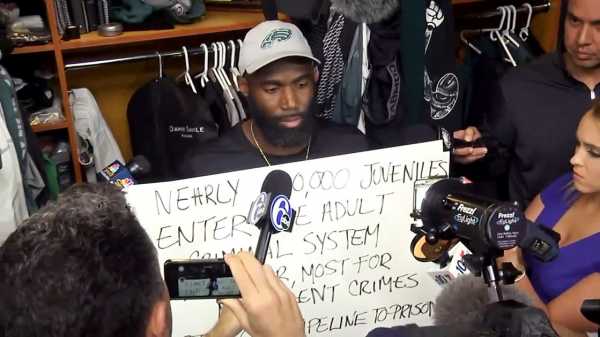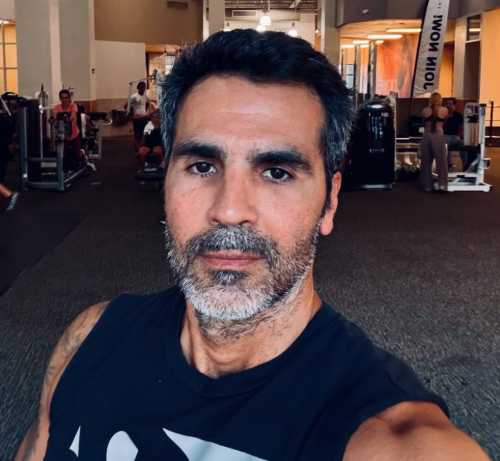
Not long after Colin Kaepernick, then a quarterback for the San Francisco 49ers, began protesting systemic racism and police brutality, Malcolm Jenkins, the Philadelphia Eagles safety, decided to join the fight. But Jenkins did not sit during the national anthem, as Kaepernick had at first. Nor did he kneel, as Kaepernick had begun doing after consulting with a former Green Beret named Nate Boyer, who suggested that kneeling would be more respectful toward members of the military. Jenkins had noted how much confusion there was over what, exactly, Kaepernick was doing. Often his gesture was described as a protest of the anthem itself, or even as a protest of service members who had fought and died for the country. “No one knew the story, so his story was told for him,” Jenkins told me when I interviewed him for The Atlantic last month. So, along with three other members of the Eagles, Jenkins decided to raise his fist, in the manner of Tommie Smith and John Carlos, who gave the black-power salute on the podium at the 1968 Olympics. He wanted to make a gesture that had a clear story behind it. It was legible. No one in good faith could mistake what it meant.
The problem, of course, is that Donald Trump does not act in good faith; he makes up whatever story serves him. After most of the Eagles decided not to attend the White House celebration of their Super Bowl victory, Trump, on Tuesday, disinvited the squad, on the grounds that they “disagree with their President because he insists that they proudly stand for the National Anthem, hand on heart, in honor of the great men and women of our military and the people of our country.” It didn’t matter that no members of the Eagles had ever sat or knelt during the anthem. Nor did it matter that the most outspoken players, such as Jenkins, the wide receiver Torrey Smith (now with the Carolina Panthers), and the defensive end Chris Long, had made it clear that their protest was against the oppression of people of color, not against the military, the anthem, or the flag. Trump’s willful misreading was repeated, allowed to linger. No one was focussing on the issues at hand: police shootings; a judicial system systematically biased against African-Americans; an educational system desperately in need of reform; racial injustice. The story became, as the story so often does, about Trump.
So, instead of taking questions about Trump during the Eagles’ media availability on Wednesday, Jenkins, a co-founder of the Players Coalition, a social-justice advocacy group, held up a sign. The sign was white, with large block letters. In the manner of most handmade signs, the letters were well-spaced on the left-hand side and crammed more closely on the right, as space ran out. But it was clear and legible.
YOU AREN’T
LISTENING
Microphones from national and local affiliates were thrust toward the sign. Jenkins kept his mouth shut. He put down the sign and revealed another.
MORE THAN 60%
OF PEOPLE IN PRISON
ARE PEOPLE OF COLOR
He stood in front of his locker wearing a gray Eagles cap and a black shirt emblazoned with the logo of Ohio State University, his alma mater. His locker was filled with football pads, compression shorts, binders, papers, a black book the size of a Bible with gilt letters on the spine, his shiny green helmet. In the next locker over, what seemed to be a large black shirt with a white graphic cartoon hung on a hook. The figure’s raised fist was visible over Jenkins’s shoulder.
NEARLY 200,000 JUVENILES
ENTER THE ADULT
CRIMINAL SYSTEM
EACH YEAR, MOSTLY FOR
NON-VIOLENT CRIMES
#STOPSCHOOLPIPELINETOPRISON
Jenkins, wearing a thin gold chain around his neck, and his black beard long but neatly trimmed, reached down and pulled up the first sign again.
YOU AREN’T
LISTENING
Word had spread around the locker room about what Jenkins was doing; more and more cameras flocked around him. He stood for a second, staring at the scrum of reporters, and then resumed revealing new signs, like Bob Dylan in the opening minutes of “Don’t Look Back,” but with clearer messages to offer. Some of the sign supplied statistics, some provided examples of what N.F.L. players—or, in the case of Kaepernick, former N.F.L. players—were doing to combat injustice.
COLIN KAEPERNICK
GAVE $1 MILLION
TO CHARITY
The cluster of microphones grew around his face.
ANY GIVEN NIGHT
500,000
SIT IN JAIL
CONVICTED? NO
TOO POOR? YES
Part of what gave Kaepernick’s protest its power was his willingness to adjust his visual symbolism, to move from sitting to kneeling, in order to be better understood. His meaning was often misconstrued regardless. Jenkins, too, has thought a great deal about communication—it is, in a sense, one of his causes. He has met with grassroots organizers, criminal-justice-system reform activists, police officers, and league officials. He brought the N.F.L. commissioner, Roger Goodell, and the Eagles’ owner, Jeffrey Lurie, to meet with public defenders and the Philadelphia police commissioner, and the Players Coalition has organized listening tours. “We said, ‘Come see why we’re protesting; come see why we’re making all this noise,’ ” he told me when I interviewed him. “We said, ‘We’re not looking for permission to do anything. We’ve already been doing this on our own. But, if you want to understand what we’re trying to get accomplished, we invite you to see for yourself firsthand.’ ”
The signs were another kind of invitation, and also an admonition. If people won’t listen, perhaps they will see.
Sourse: newyorker.com






